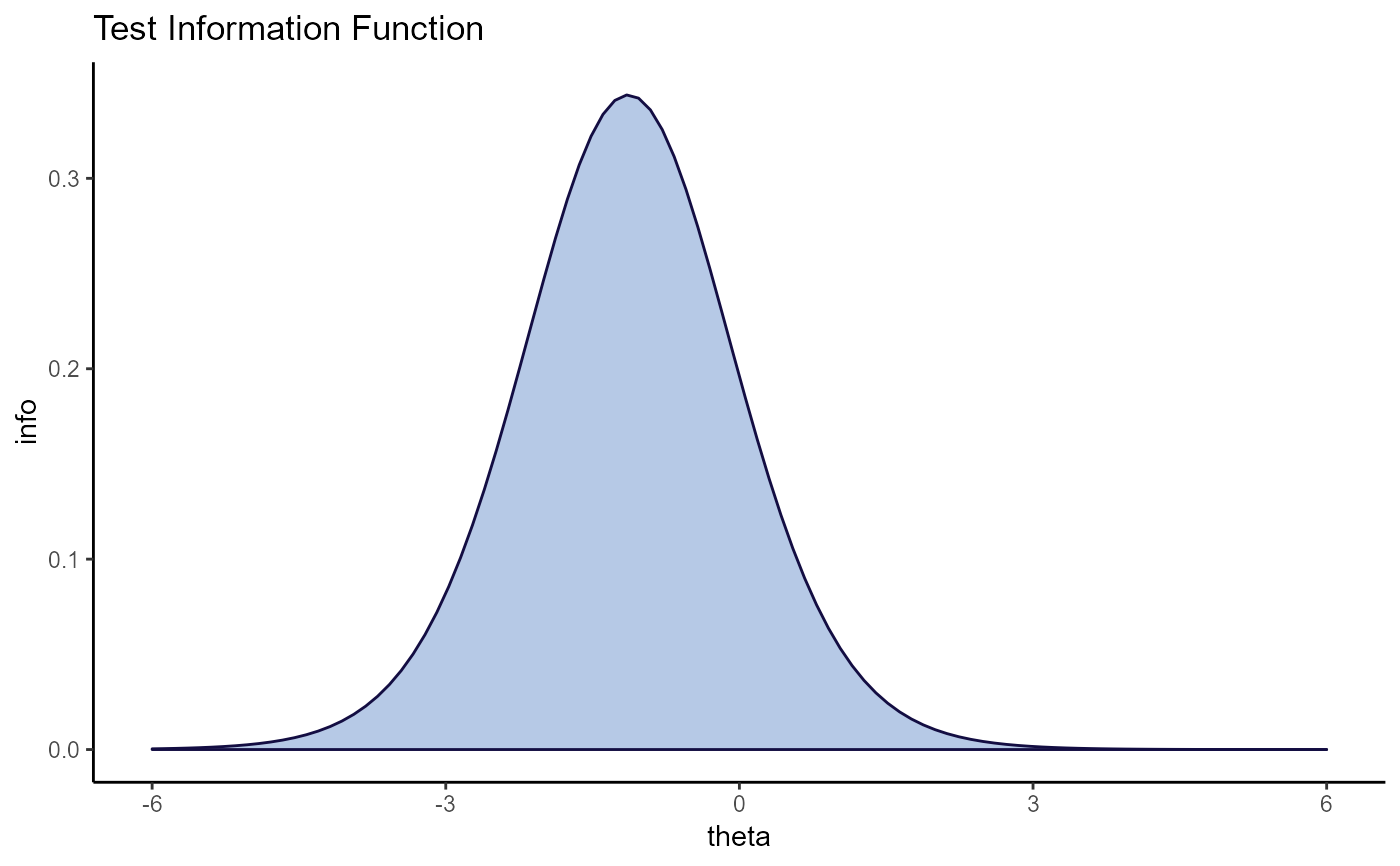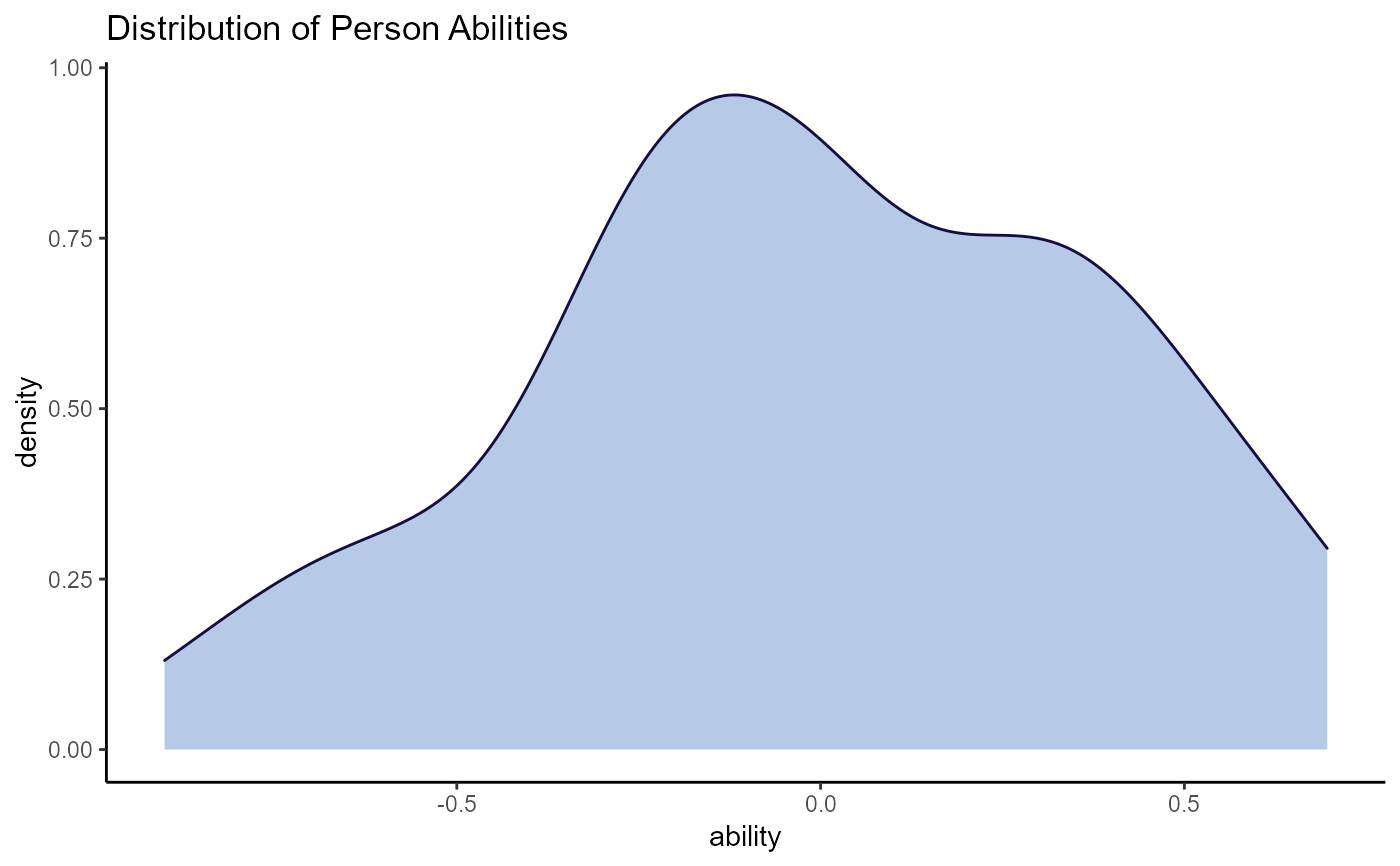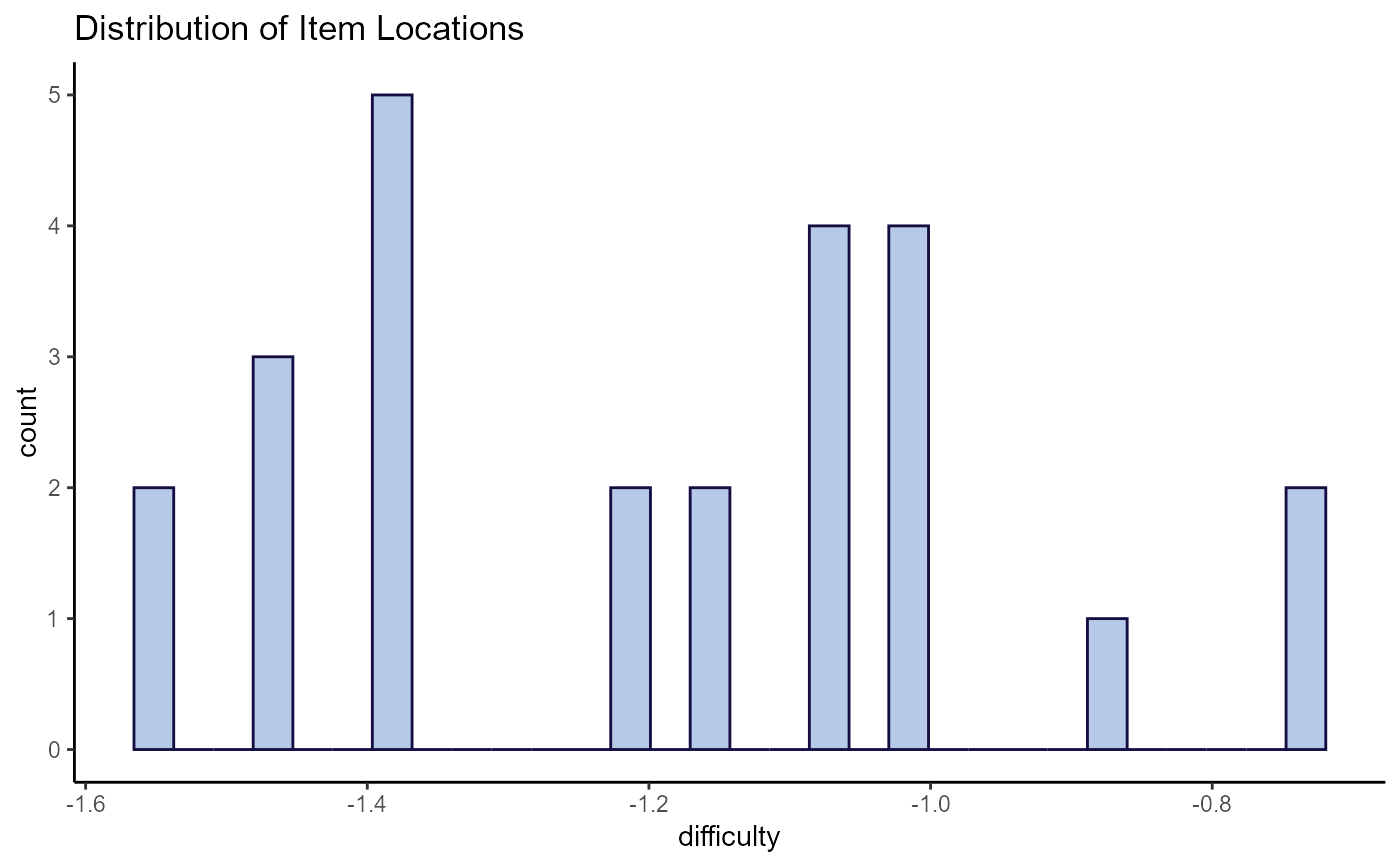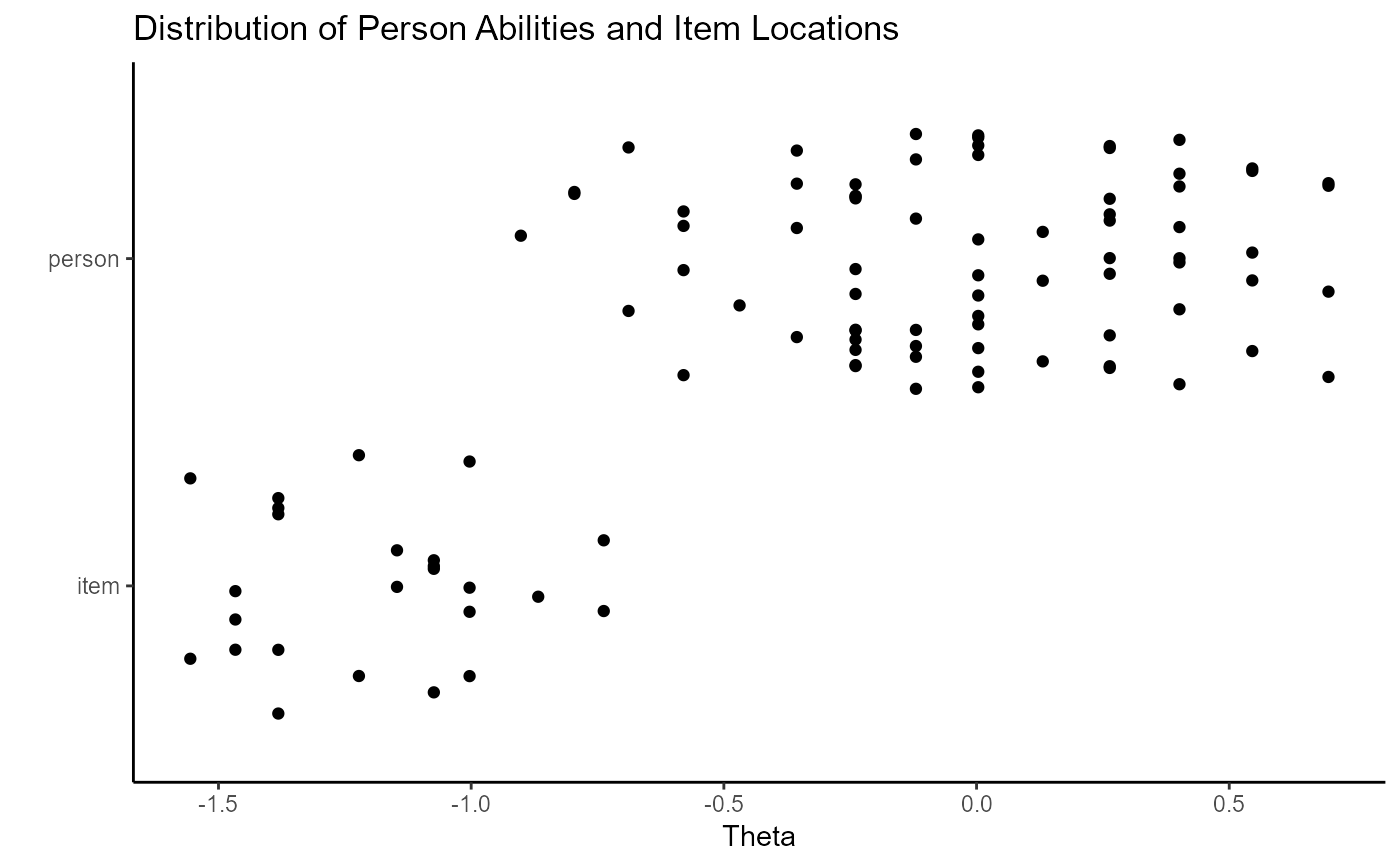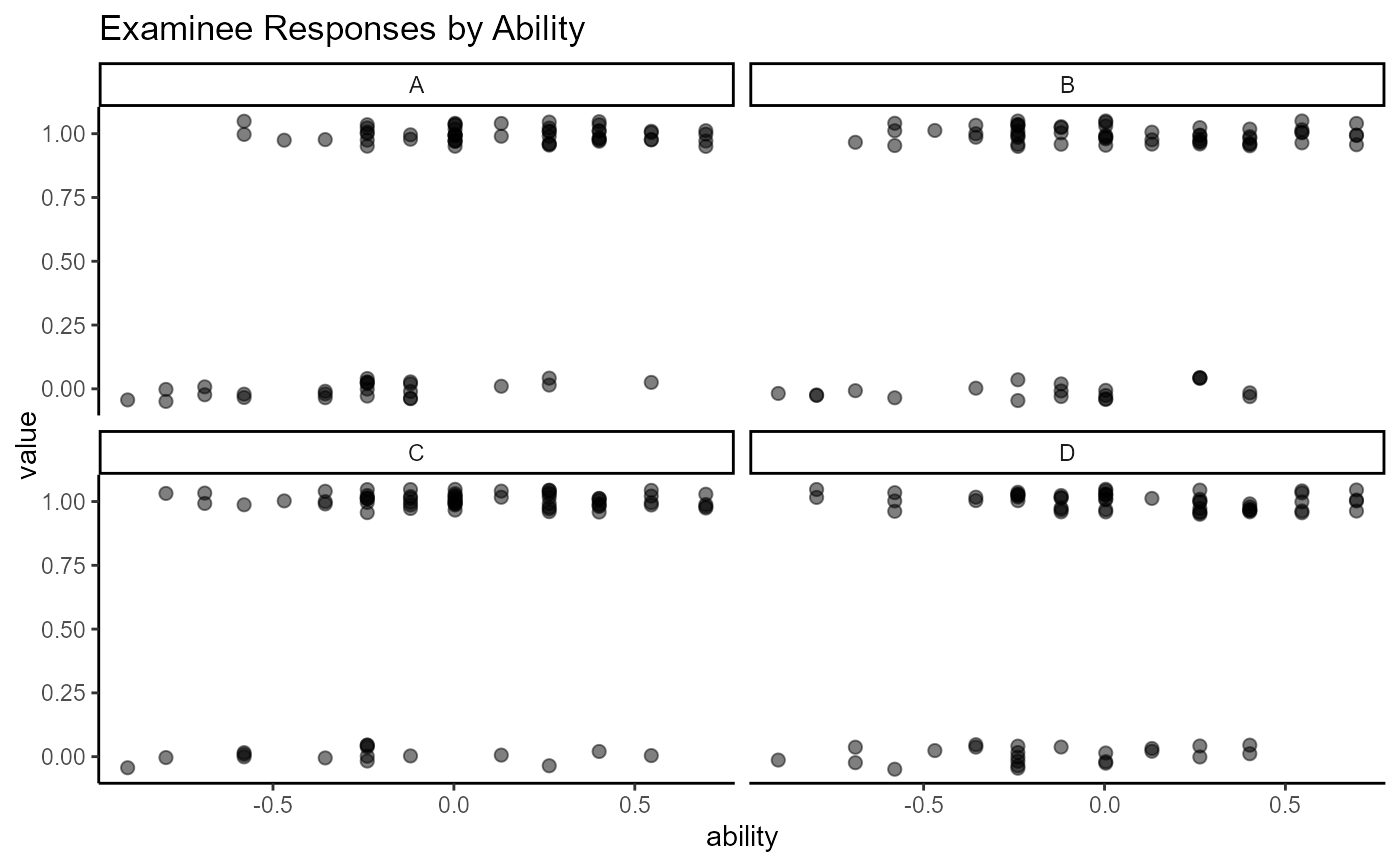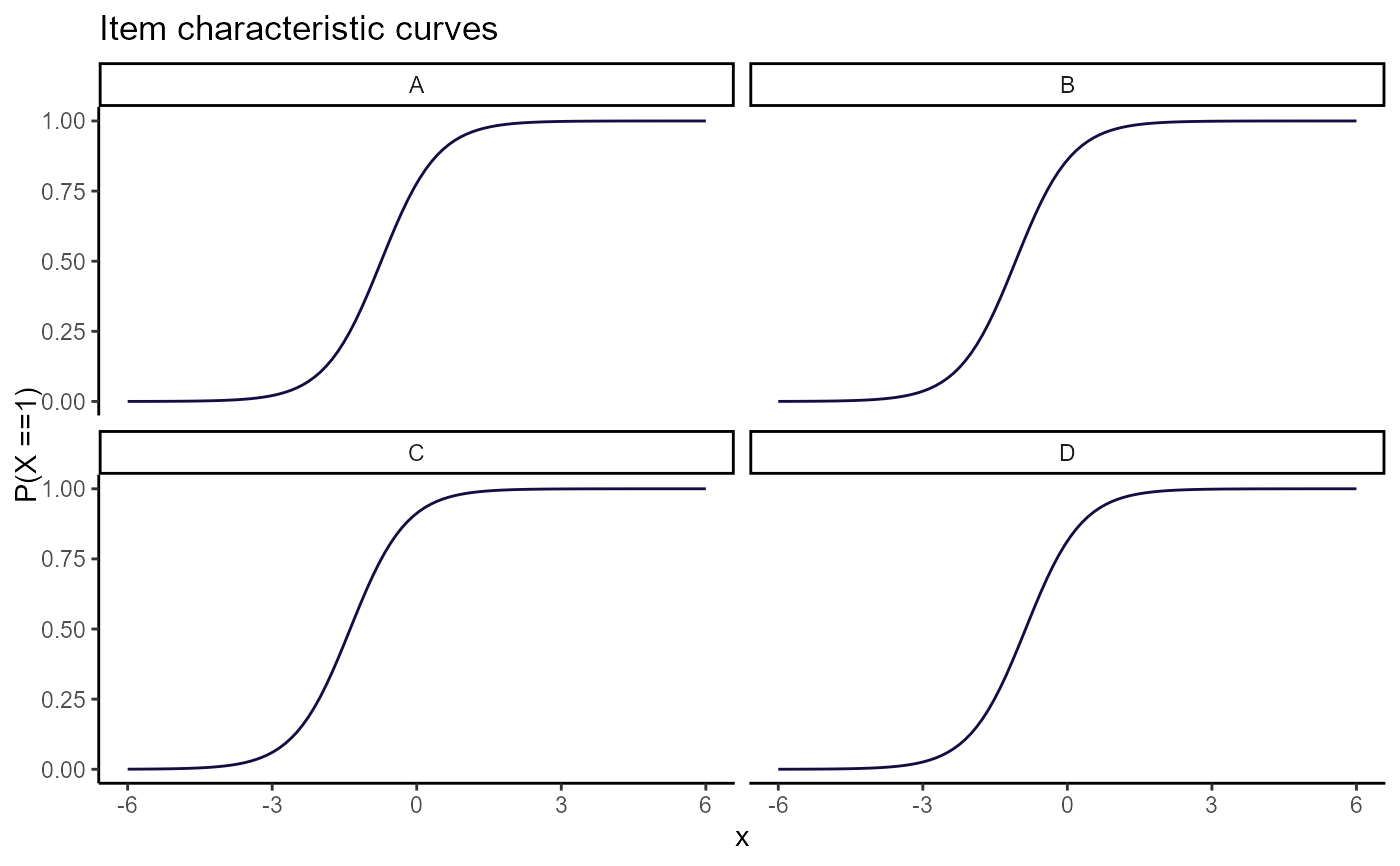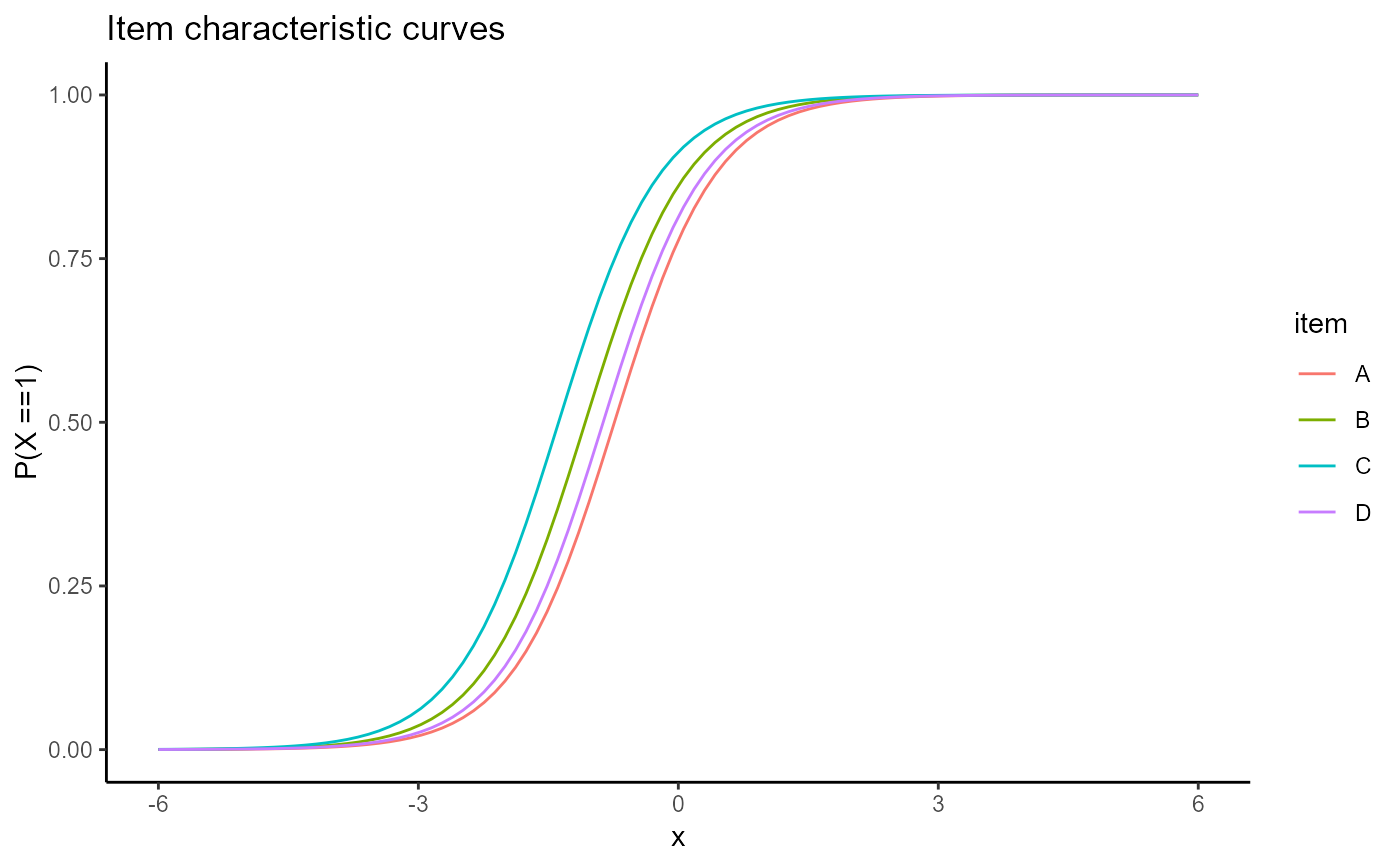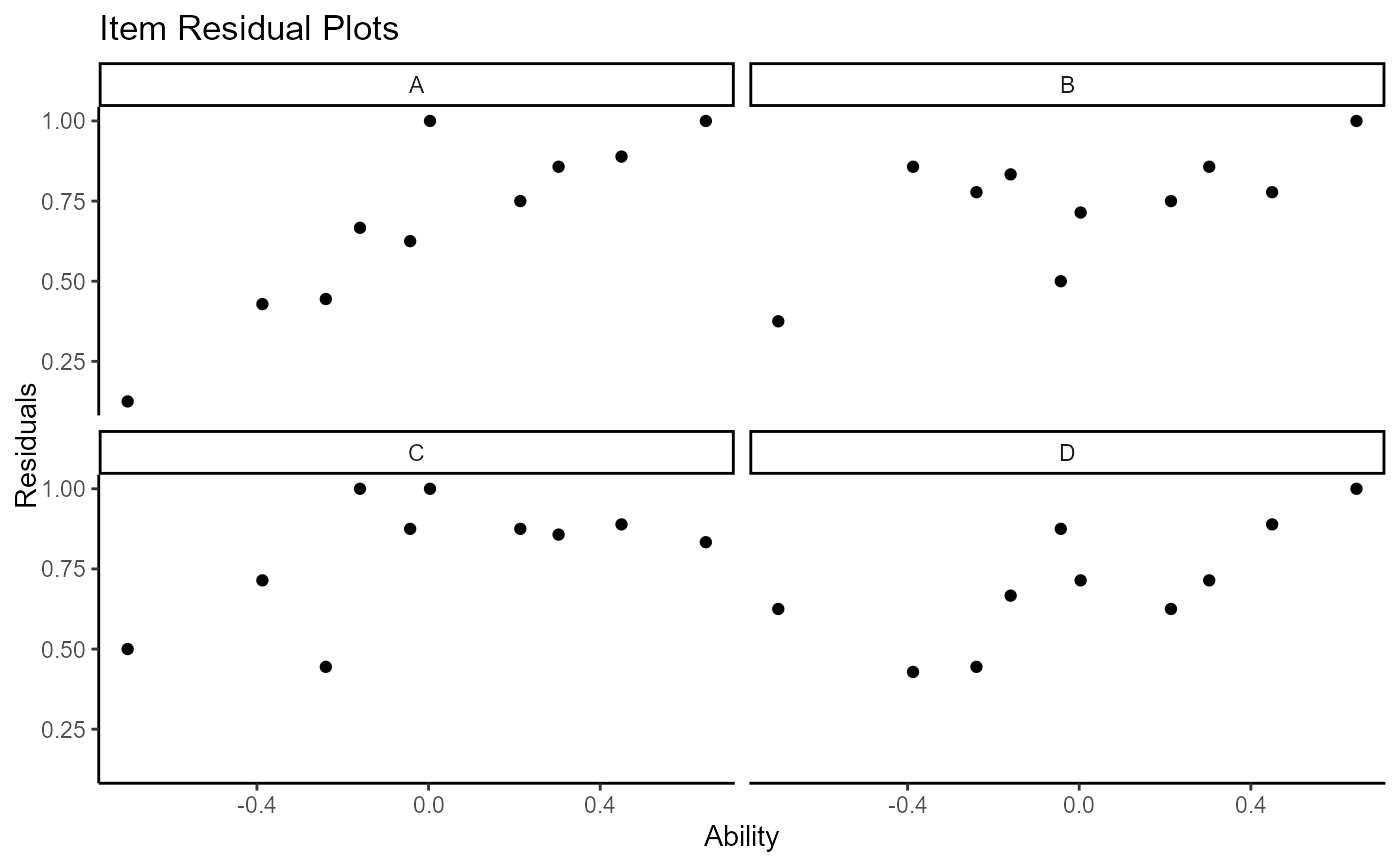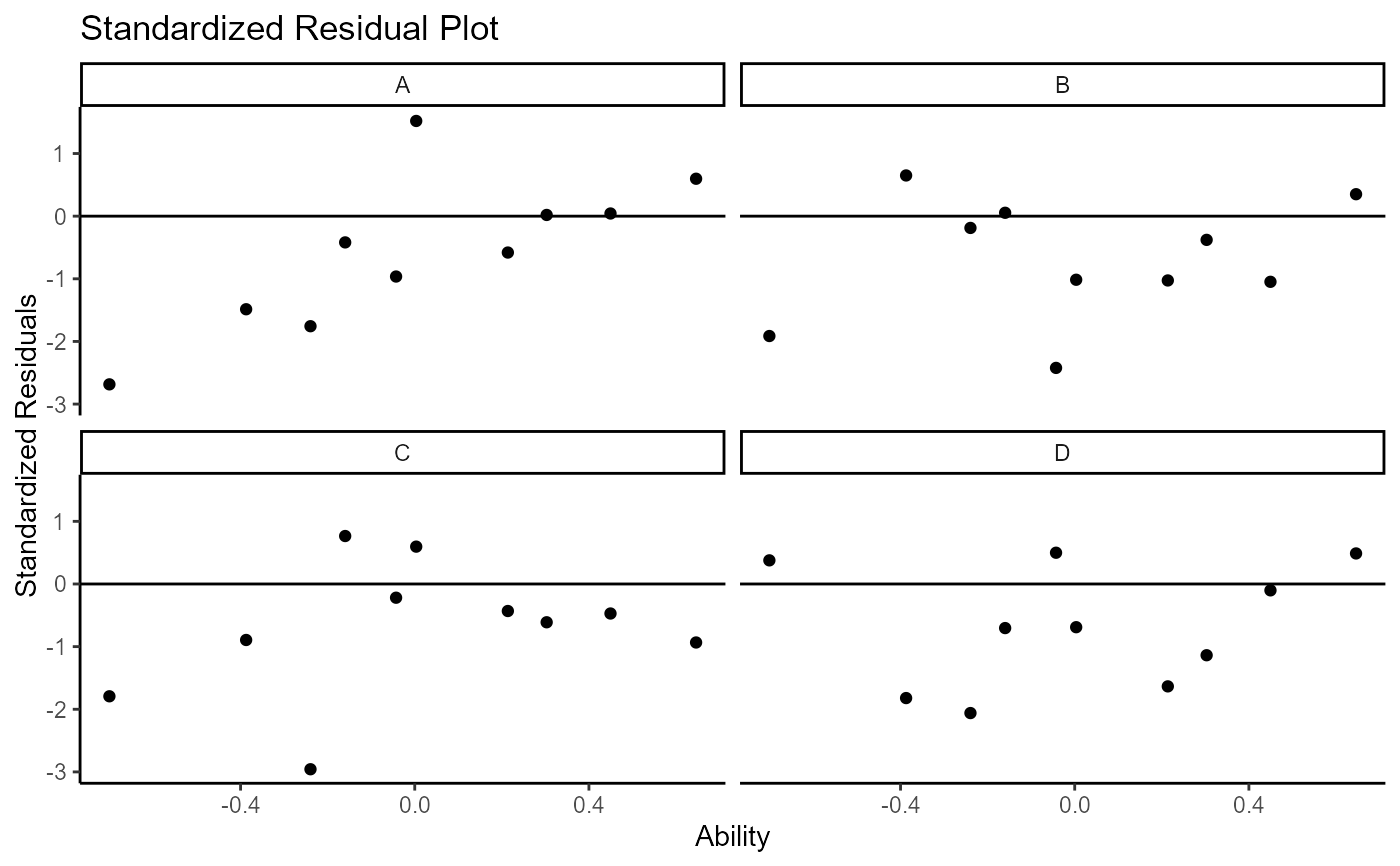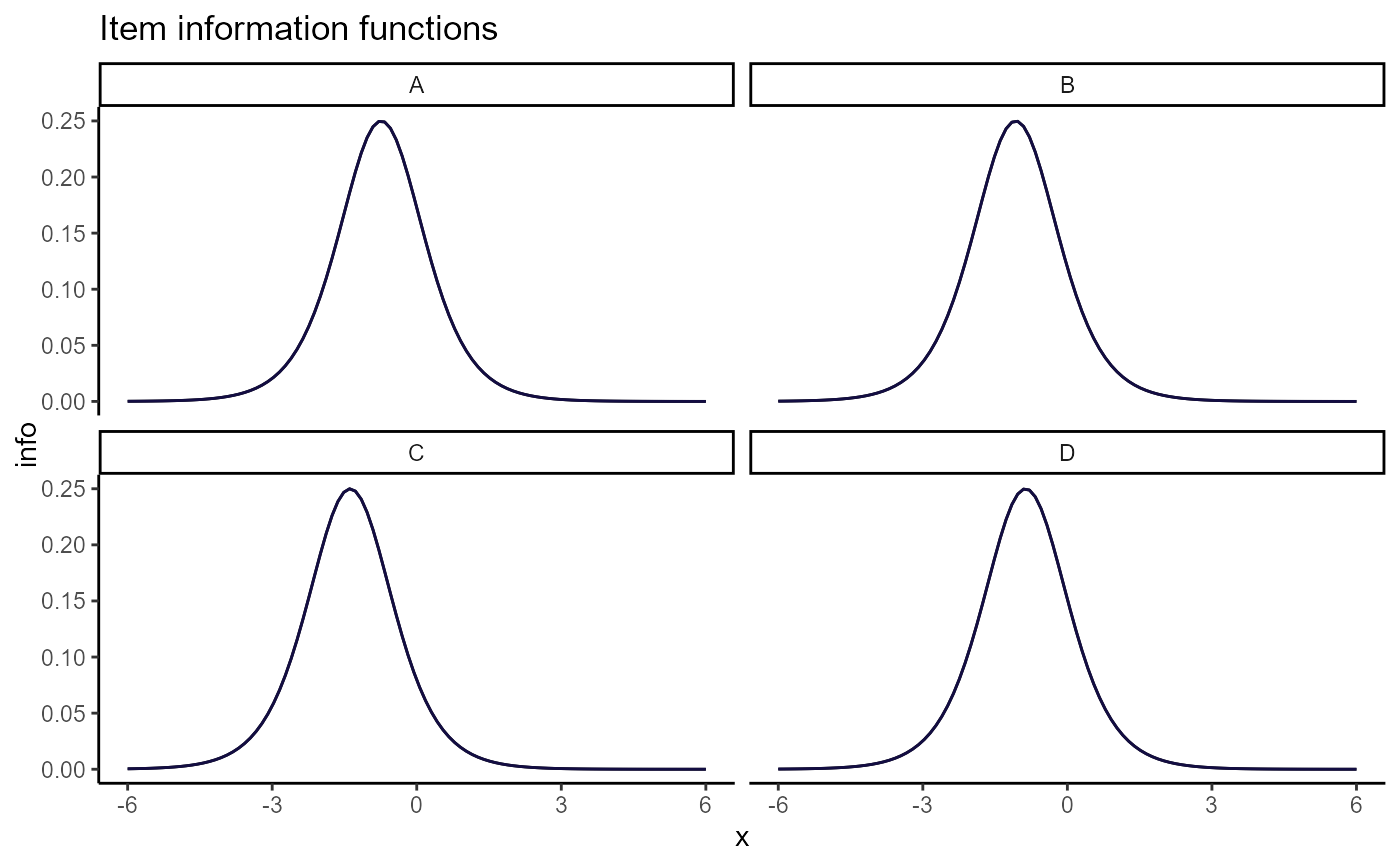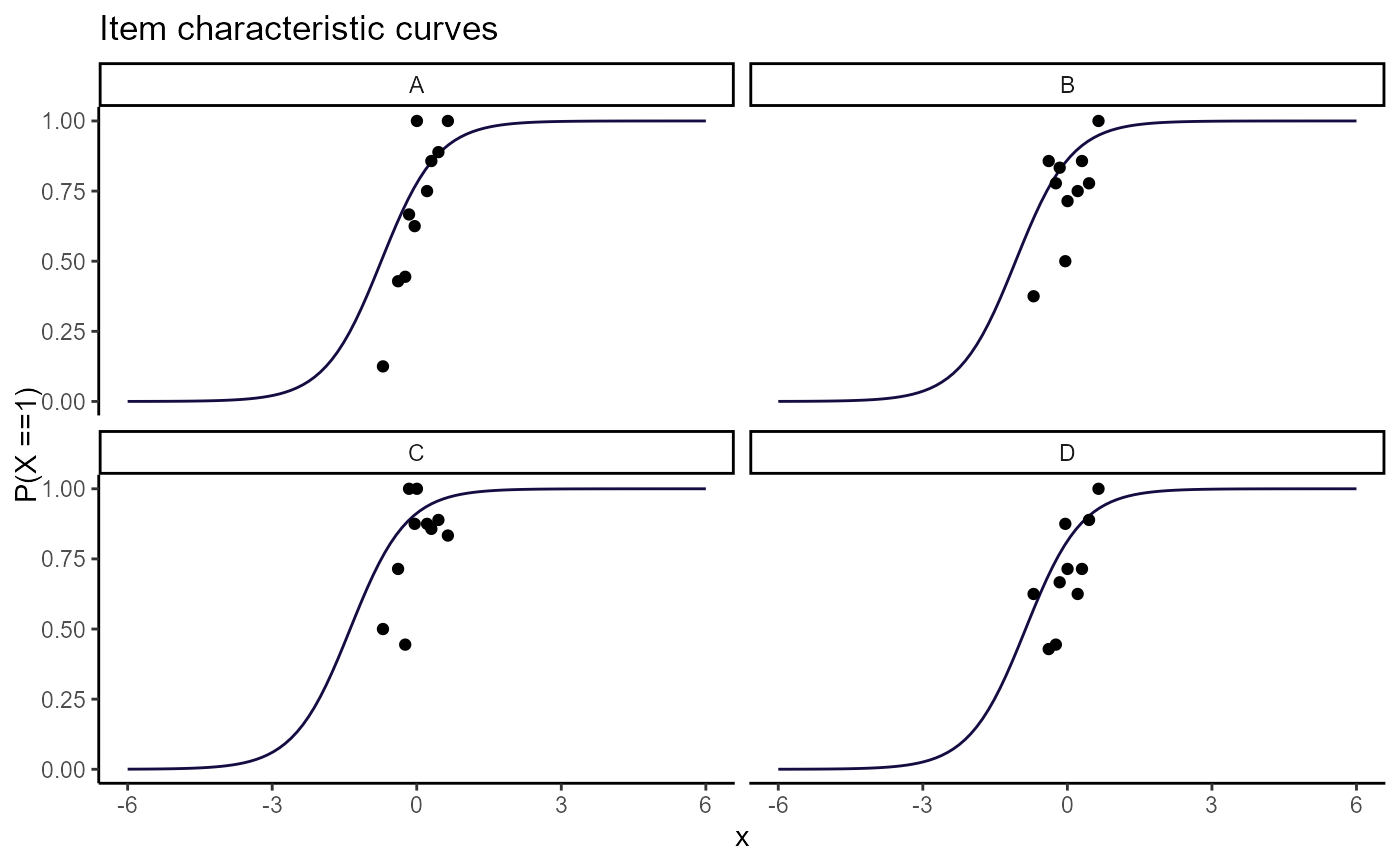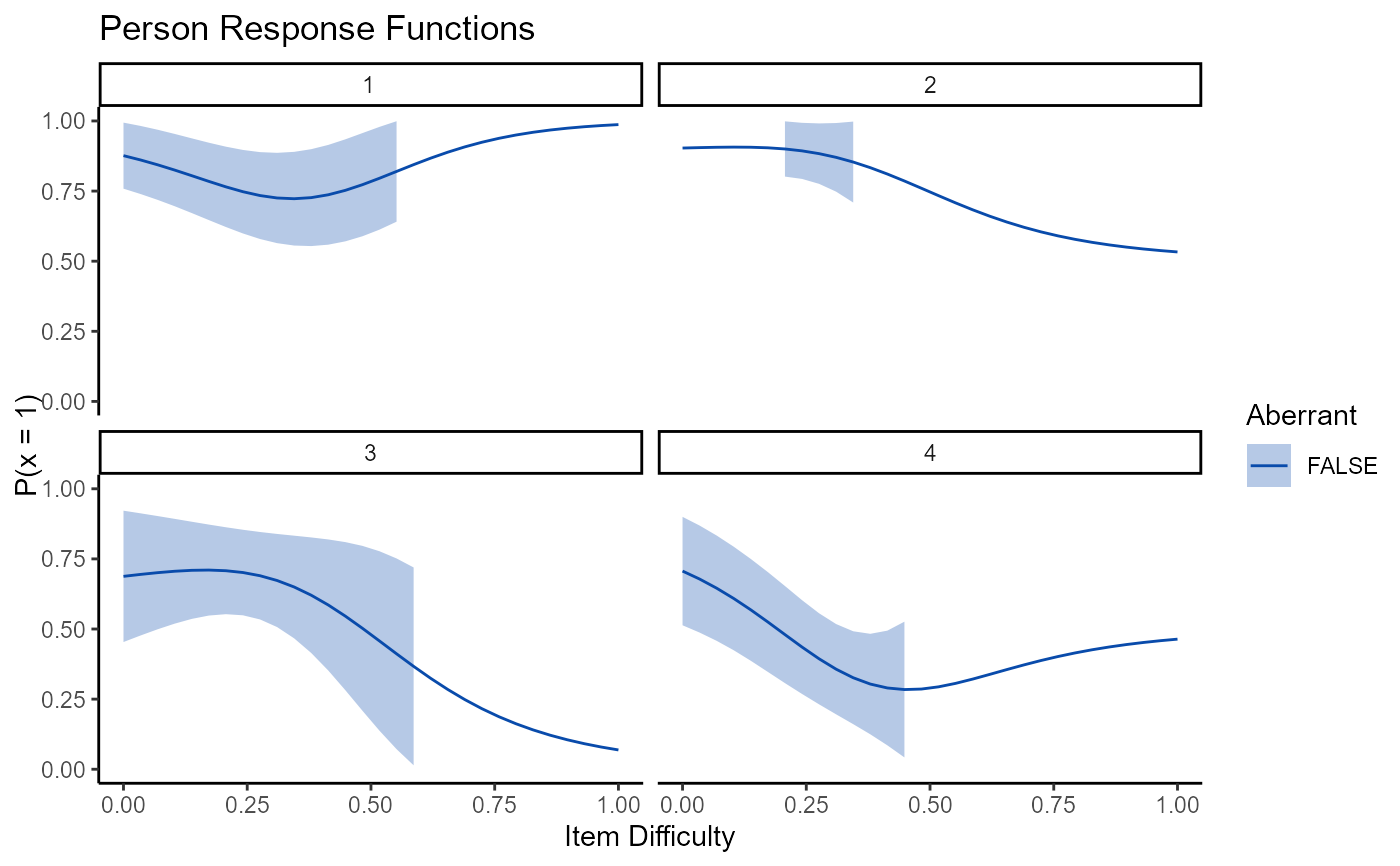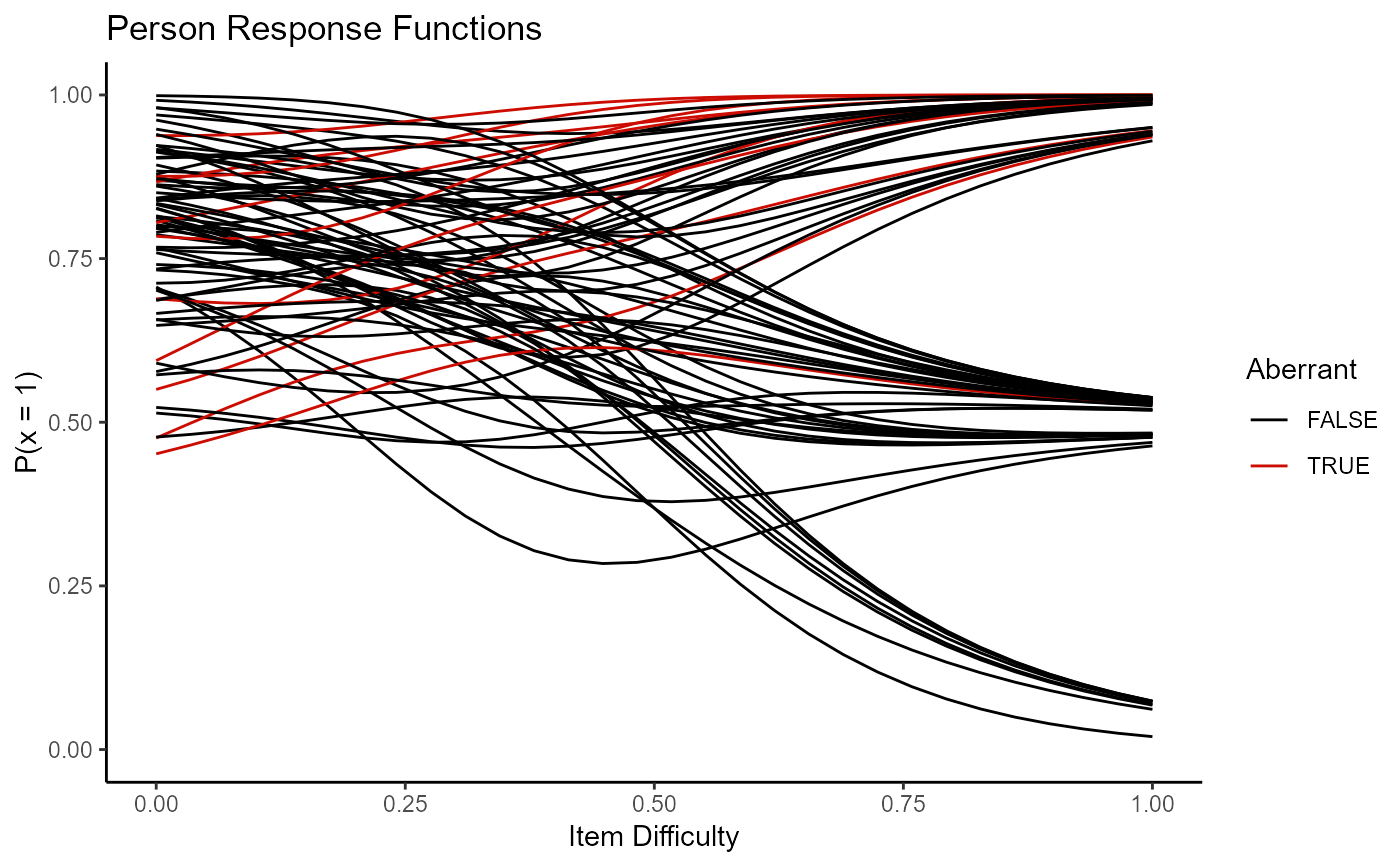Plot method for wizirt objects
plot.wizirt.RdAll plots in wizirt use ggplot2 as a backend. Type 'theta_diff' also uses gghalves. For the item-focused plots, the types can be included in the same string to overlay the plots (e.g. resid_trace). For large numbers of persons and/or items, you may want to consider limiting the number printed at a time on some plots.
# S3 method for wizirt plot( wizirt_fit, type = "tinfo", items = NULL, persons = NULL, facets = TRUE, quads = 10, return_data = FALSE, pfa = NULL, ifa = NULL )
Arguments
| type | Character. Currently, can be 'obs', 'trace', 'info', 'resid', 'stand', 'tinfo', 'theta', 'diff', 'theta_diff', 'np_prf', 'ld', or 'ld_pairs'. |
|---|---|
| items | Which items to plot? Either a numeric vector of item positions in the column names of the data, or a vector of the item names to plot. If nothing is specifed all items will be plotted. |
| persons | Which persons to plot? Either a numeric vector of person positions in the row names of the data, or a vector of the person ids to plot. If nothing is specifed all persons will be plotted. |
| facets | Logical. Should the plots be faceted? Default is TRUE. |
| quads | Numeric. For plots using residuals (i.e. resid, stand). How many quantiles should the data be broken into? |
| return_data | Logical. Should the plot data be returned. If TRUE returns a list with the plot and the data. |
| pfa | An object from irt_person_fit(). If omitted, irt_person_fit() is called within the function with the default settings (only for np_prf) |
| ifa | An object from irt_item_fit(). If omitted, irt_item_fit() is called within the function with the default settings (only for tinfo) |
